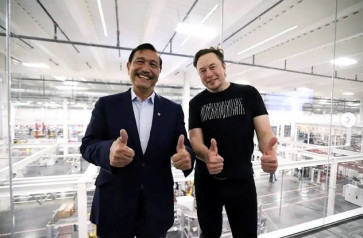Analysis: Encouraging energy reform through a household subsidy
Indonesia is one of the worldâs largest energy subsidy providers
Change Size

I
ndonesia is one of the world's largest energy subsidy providers. Data from the International Energy Agency's World Energy Outlook 2014 shows that Indonesia ranks seventh in the world in this regard after Iran, Saudi Arabia, India, Russia, Venezuela and Egypt. It is somewhat odd that Indonesia is counted among the globe's energy-rich nations. The aforementioned six countries sit on large reserves of oil or gas, but the same cannot be said of Indonesia at present. Thankfully, after slashing most fuel subsidies for having largely failed to reach their intended targets, we have changed our way of thinking in this matter to some degree. Currently, the biggest subsidies for energy in Indonesia are reserved for electricity. In the Revised State Budget for 2015, the government allocated Rp 73.1 trillion (US$5.2 billion) of subsidies for electricity, accounting for 53 percent of total energy subsidies and 34.5 percent of the government's total subsidy expenditure.
If we go deeper into the issue, we find that the largest group of electricity subsidy recipients comes from households with low-voltage capacities of R1/450 VA and R1/900 VA. In the 2015 State Budget, these two customer segments received 84.8 percent of the total electricity subsidy allocation. According to 2014 data, these two segments comprised 44.3 million customers. If we aim to help boost the purchasing power of poor communities, the subsidy tends to miss its target because only 27.7 million of these residents can be categorized as poor. Assuming these poor people live in households, the figure of poor households will, therefore, be lower.
In the meantime, persistently poor supervision can also give rise to fraudulent practices. There have been reports of some households installing certain meters that make them pay at a subsidized rate although high voltage use suggests that they should pay a higher tariff.
Moreover, the electricity tariffs for these two customer segments have not seen any increase for 11 years since 2004, while subsidies provided per each kilowatt hour (kWh) have continually increased. As of 2014, electricity tariffs for the two groups were at Rp 414.9 (450 VA) and Rp 586.5 (900 VA), respectively, while the basic electricity cost in 2014 stood at Rp 1,553.6. This means that both customer segments in question pay three times less than what they should. These two customer segments account for the largest amount of consumption, resulting in an increasingly large amount of electricity subsidy being provided.
It is interesting and worthwhile to study how Indonesia can provide direct incentives to the public to consume electricity efficiently given that the country is no longer an energy rich nation.
We should look to countries such as South Korea and Japan that have been imposing progressive electricity tariffs for households. Using a large amount of electricity means that a higher tariff has to be paid by the household per kWh.
In South Korea, electricity tariffs for industry are much lower than those imposed for residential use. The price mechanism applied to industry is more oriented toward diverting loads in peak hours. Industries may get lower tariffs should they operate at times of low loads. With average rates for industry lower than those for residences, the government encourages the public to use energy for more productive activities.
Of course, the majority of households using 450VA (R1/450 VA) and those using 900VA (R1/900 VA) are said to be impoverished, and therefore electricity subsidies are supposed to protect their purchasing power. However, it would be better if we could create a mechanism for providing subsidies that reach out to the targeted groups more accurately.
What if subsidies were to be given directly to poor people? For example, subsidized tariffs could be handed over as PLN credit vouchers to poor communities. The amount of the subsidy provided through a voucher is decided, in the same way as the regional minimum wage, according to the standard usage of each voltage group. This could continue to protect public purchasing power while also encouraging people to use electricity efficiently.
Once the tariffs have returned to an economically viable level and subsidies have been given to people who are entitled to receive them, then PLN has to sort itself out in terms of its energy mix policy, so that the cost of supplying electricity to the public can be made more affordable.
With its key role and responsibility for delivering energy to the public, PLN should not be short of incentives to strive to be more efficient and innovative in providing electricity. As such, supervision by the government is absolutely necessary to ensure that PLN not only pursues profit, but also assumes the obligation of providing affordable electricity to all people across Indonesia.
_____________________________
The writer is an industry analyst at Bank Mandiri









